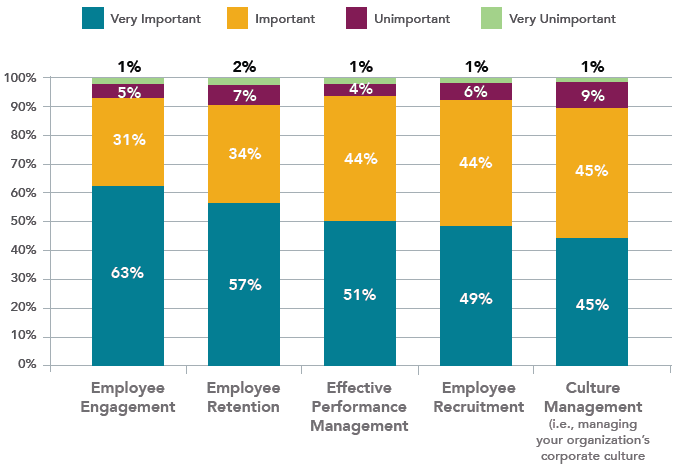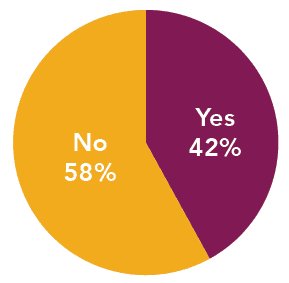Jack Welch, former CEO of General Electric, once stated:
Any company trying to compete … must figure out a way to engage the mind of every employee.
According to survey from Globoforce – Employee Recognition Survey 2012 – employee engagement remains the primary issue facing companies today. According to our survey, 94 percent of respondents say employee engagement is an important or very important workforce challenge they currently face. Of these, 63 percent rate it as very important.
Yet, according to survey results, only 42 percent of respondents currently track employee engagement levels. This represents a missed opportunity to get an actionable assessment of employee attitudes and behaviors.
Employee engagement is essential to a company’s performance. There are extensive studies showing that organizations with high employee engagement significantly increase their odds of above average performance across their businesses.
Since engagement has such measurable positive effects, one would think that all companies have learned to harness it and appreciate it, right? Wrong! Here’s a snapshot of where we currently are with engagement:
Employees are largely unengaged
The vast majority of the German workforce is not engaged with its work. According to Gallup 86% percent of German employees are “not engaged” or “actively disengaged” in their work, meaning they are emotionally disconnected from their workplaces and are less likely to be productive. That leaves 14% of of German employees who are “engaged,” or involved in and enthusiastic about their work and contributing to their organizations in a positive manner.
The United States has an advantage over Germany in the percentage of engaged and not engaged employees: 29% of American employees are engaged, and 51% are not engaged – a difference of 15 percentage points compared to Germany’s engagement levels.
Employees don’t feel loyalty
If engaged employees are committed to the company and its goals, why are most employees just waiting to jump ship? According to a 2011 Careerbuilder report, “76% of full-time workers, while not actively looking for a new job, would leave their current workplace if the right opportunity came along.”
Other studies show that each year, the average company loses anywhere from 20% to 50% of its employee base.
Employees don’t feel pride
No employee will be an effective advocate if he or she doesn’t feel pride. However, Modern Survey finds the opposite: pride in the company has decreased from 73% to 66%, and desire to recommend the company dropped from 49% to 41%.
Employees don’t want to go above and beyond
While engaged workers use discretionary effort, the opposite is happening in the disengaged workforce. Most employees’ desire to go above and beyond slipped from 58% to 48%.
Short URL & title:
Current status of employee engagement — http://www.torbenrick.eu/t/r/bzx
Share it:
If you enjoyed this article, please take 5 seconds to share it on your social network. Thanks!










About The Author
Torben Rick
Experienced senior executive, both at a strategic and operational level, with strong track record in developing, driving and managing business improvement, development and change management. International experience from management positions in Denmark, Germany, Switzerland and United Kingdom